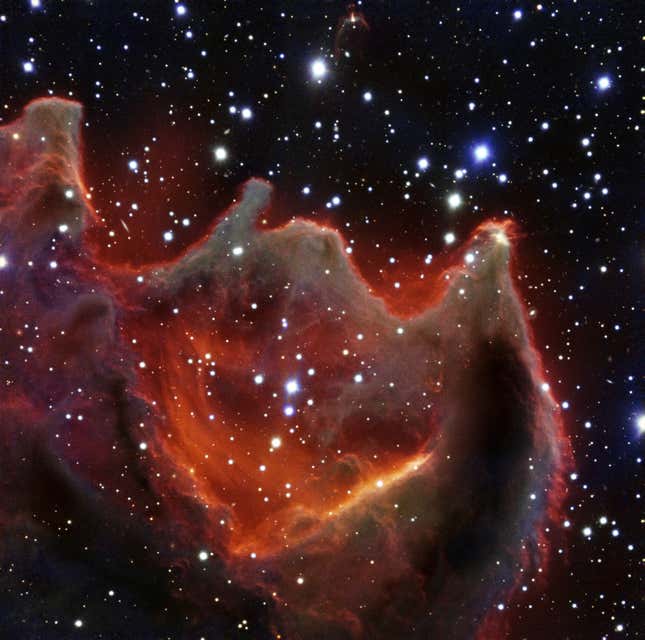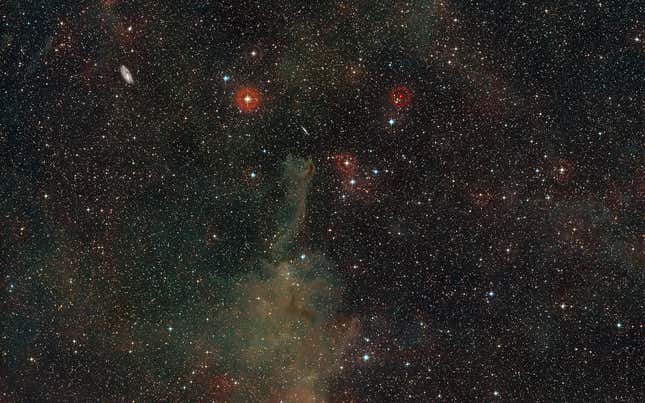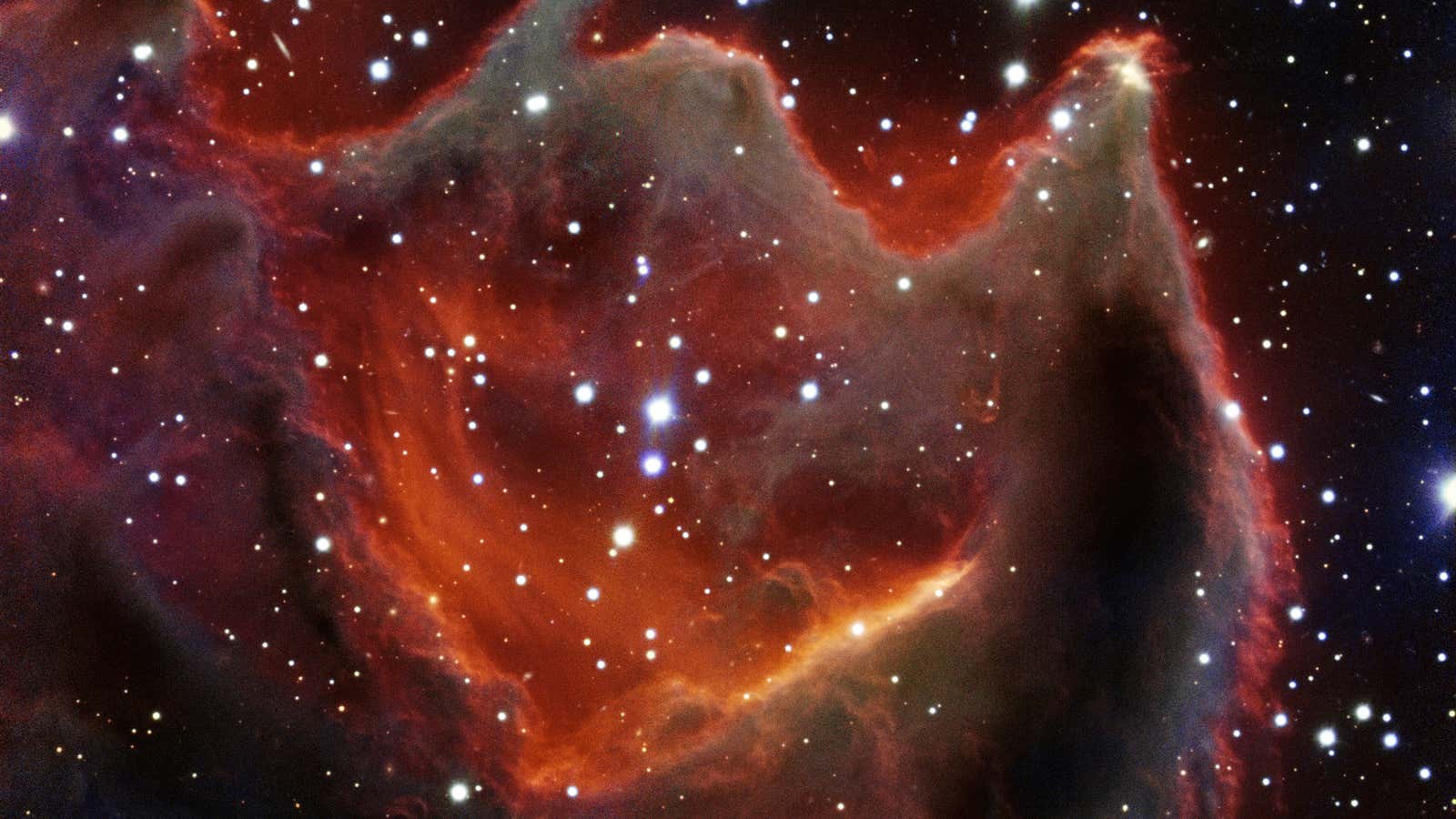About 1,300 light years (7.6 quadrillion miles) from Earth, there is a dim nebula called CG4, also known as “God’s Hand.”
CG4 is what’s known as a “cometary globule,” which is a misnomer. Though cometary globules resemble comets from afar due to their heads and long tails, they are actually much larger (though still small on an astronomic scale). CG4, for example, has a head with a diameter of 1.5 light years (8.8 trillion miles) and a tail length of 8 light years (47 trillion miles).
Because cometary globules are so dim, it’s difficult to see them clearly. But recently the Very Large Telescope, a space telescope run by the European Southern Observatory from a plateau in northern Chile, captured several beautiful images of CG4. On Jan. 28, it released those photos to the public.
Here’s one close-up of CG4 (if an image that captures several trillion miles can be called a close-up):

And here’s another, wider-field image:

Other older, but still awesome, images of CG4 can be found by searching on the European Southern Observatory’s web site.




